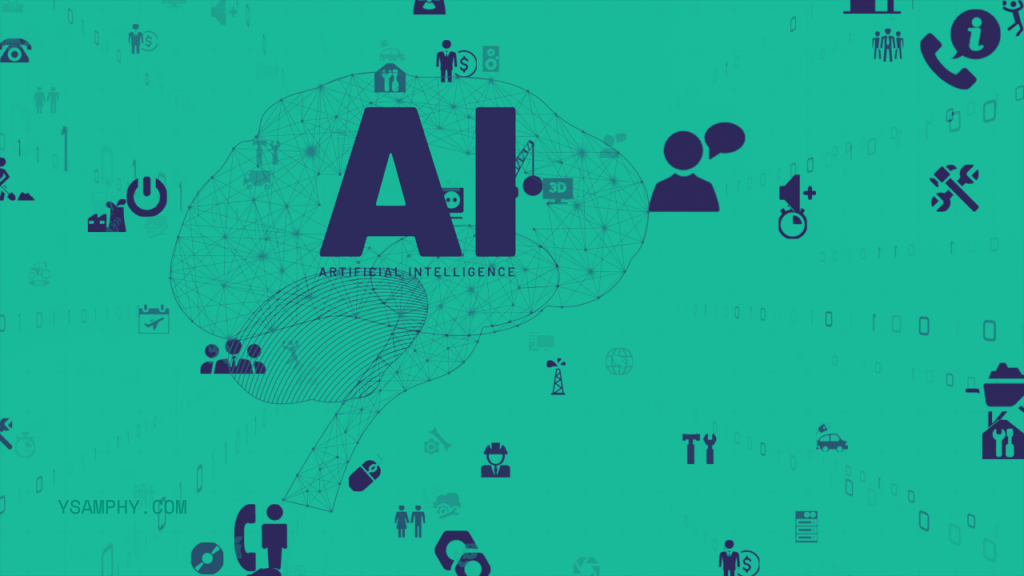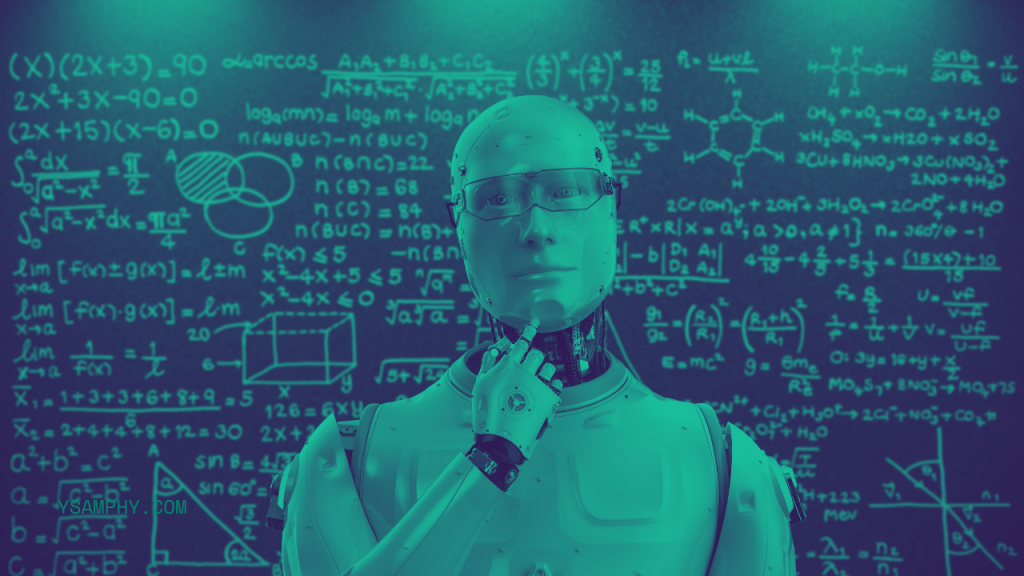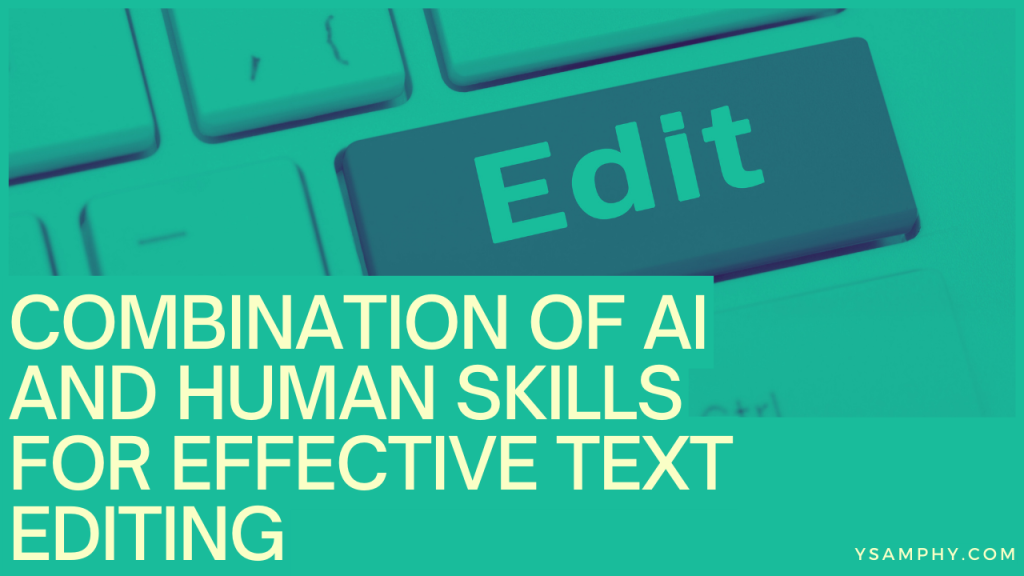In an age where digital content is omnipresent, text editing has become more crucial than ever. Whether drafting a blog post, a research paper, or marketing materials, the quality of text can significantly impact its effectiveness. Over the years, text editing tools have evolved from manual corrections to sophisticated digital solutions. One of the most significant advancements in recent times is the integration of Artificial Intelligence (AI) into text editing. This article explores how combining AI with human skills can lead to more effective text editing, examining the roles, benefits, challenges, and future prospects of this synergy.

The Role of AI in Text Editing
AI has significantly transformed text editing, introducing tools that enhance both efficiency and precision. AI-powered text editors now come equipped with sophisticated features that go beyond basic error correction. For example, advanced grammar and spell checkers have evolved to include context-aware capabilities, allowing them to understand the nuances of language and suggest improvements that align with the overall tone and style of the content. Machine learning algorithms, at the core of these tools, utilize Natural Language Processing to analyze and generate human-like text with remarkable accuracy.
These algorithms help in identifying subtle errors and inconsistencies that traditional methods might miss. One key aspect of using AI in text editing is learning how to humanize AI text. This involves not only correcting grammatical issues but also ensuring that the text maintains a natural, engaging quality. AI tools can offer predictive text and auto-completion features that streamline writing, but they must be carefully managed to avoid producing overly mechanical or impersonal content.
By integrating these AI capabilities with human oversight, editors can achieve a balanced approach that leverages technological advancements while preserving the authenticity and relatability of the text.
AI-Powered Text Editors and Tools
AI-powered text editors are equipped with features designed to automate and enhance the editing process. These include grammar and spell checkers, which have evolved from basic error detection to sophisticated systems capable of understanding context. Modern tools offer style and tone suggestions that align with the desired voice of the content, whether it’s formal, conversational, or persuasive.

Machine Learning Algorithms in Text Editing
At the heart of AI text editors are machine learning algorithms that use Natural Language Processing to interpret and edit text. NLP enables AI systems to understand and generate human language with remarkable accuracy. Context-aware corrections are a significant advancement, allowing AI to recognize and correct errors based on the surrounding text. Predictive text and auto-completion features also enhance writing efficiency by suggesting words or phrases that fit the context, thus speeding up the writing process.
Benefits of AI in Text Editing
The integration of artificial intelligence in text editing brings several notable advantages. According to Rashi Maheshwari from Forbes, one of the primary benefits is the significant increase in efficiency and speed achieved by automating repetitive tasks. AI tools excel in ensuring consistency and accuracy across extensive volumes of text, which is crucial for maintaining uniformity in style and formatting. Additionally, AI’s capability to process large amounts of data swiftly makes it an invaluable resource for handling complex or lengthy documents. The advantages of artificial intelligence in text editing are clear, enhancing productivity and precision in various editorial tasks.
The Role of Human Skills in Text Editing
While AI has made substantial strides in text editing, human skills remain indispensable. Human editors bring a level of understanding and nuance that AI currently cannot match.
Understanding Context and Nuance
One of the critical areas where human skills excel is in understanding context and nuance. Humans are adept at interpreting cultural references, idiomatic expressions, and emotional undertones that AI might miss. This ability to grasp the subtleties of language is crucial for editing texts that require a deep understanding of the subject matter and the intended audience.
Creative and Critical Thinking
Human editors also contribute creative and critical thinking to the editing process. They can enhance narrative flow, craft compelling arguments, and provide insights that add depth and originality to the text. While AI can offer suggestions based on patterns and algorithms, it lacks the creativity and critical judgment that human editors bring to the table.
Ethical Considerations and Subjectivity
Ethical considerations play a significant role in text editing. Human editors are better equipped to make subjective judgments that align with ethical standards and personal style. They can navigate the complexities of ethical editing practices, ensuring that the content is not only accurate but also respectful and sensitive to various perspectives.

Synergy Between AI and Human Skills
The combination of AI and human skills creates a powerful synergy that enhances text editing. By leveraging the strengths of both AI and human editors, the editing process becomes more effective and comprehensive.
Complementary Strengths
AI excels in technical accuracy, handling repetitive tasks, and processing large volumes of text. It ensures consistency and can quickly identify errors that might be overlooked in manual editing. On the other hand, humans provide creative insights, contextual understanding, and ethical considerations that AI cannot replicate. By combining these strengths, the editing process becomes more robust and nuanced.
Workflow Integration
Integrating AI tools into the editing workflow involves adopting best practices for utilizing these technologies. This includes using AI tools for initial drafts and error detection while relying on human editors for final revisions and creative input. Collaborative editing approaches, where AI and human editors work together, can streamline the process and improve the overall quality of the text.
Case Studies and Examples
Several industries have successfully integrated AI and human skills in text editing. For instance, publishing houses use AI to handle preliminary editing tasks, such as grammar checks and style suggestions, while human editors focus on narrative development and ensuring that the content aligns with the publisher’s standards. Similarly, content marketing agencies utilize AI to analyze and optimize content for SEO, while human writers and editors fine-tune the text to engage and resonate with the target audience.
Challenges and Considerations
Despite the advantages, the integration of AI and human skills in text editing presents several challenges that need to be addressed.
Limitations of AI in Text Editing
AI-powered writing assistants, despite their advanced capabilities, face limitations when dealing with complex language constructs and subtleties. They may encounter difficulties with abstract concepts, creative writing styles, or texts that necessitate a profound cultural understanding. Additionally, excessive reliance on these tools can result in a loss of personal touch and originality in the content.
Balancing AI and Human Input
Ensuring quality control in a workflow that combines AI and human input requires careful balancing. Human editors must review and refine AI-generated suggestions to maintain the author’s voice and integrity. This balance ensures that the final text is accurate, engaging, and reflective of the intended message.
Future Developments and Trends
The future of text editing will likely see continued advancements in AI technology. As AI tools become more sophisticated, they will offer even greater support for text editing tasks. However, the role of human editors will remain crucial, as they provide the creativity, context, and ethical judgment that AI cannot replicate. The evolving collaboration between AI and human editors will shape the future of text editing, leading to more efficient and effective content creation.
Conclusion
The combination of AI and human skills offers a promising approach to effective text editing. AI tools enhance efficiency and accuracy, while human editors provide contextual understanding, creativity, and ethical judgment. By leveraging the strengths of both, the text editing process can be more comprehensive and effective. As technology continues to advance, the collaboration between AI and human skills will play a crucial role in shaping the future of text editing, ensuring that content remains high-quality and engaging in an increasingly digital world.

References and Further Reading
- Books and articles on AI in text editing
- Notable AI tools and platforms
- Academic research on AI and human collaboration
By exploring the interplay between AI and human skills, this article highlights the potential for a harmonious and effective text editing process that combines technological advancements with the invaluable insights of human expertise.

